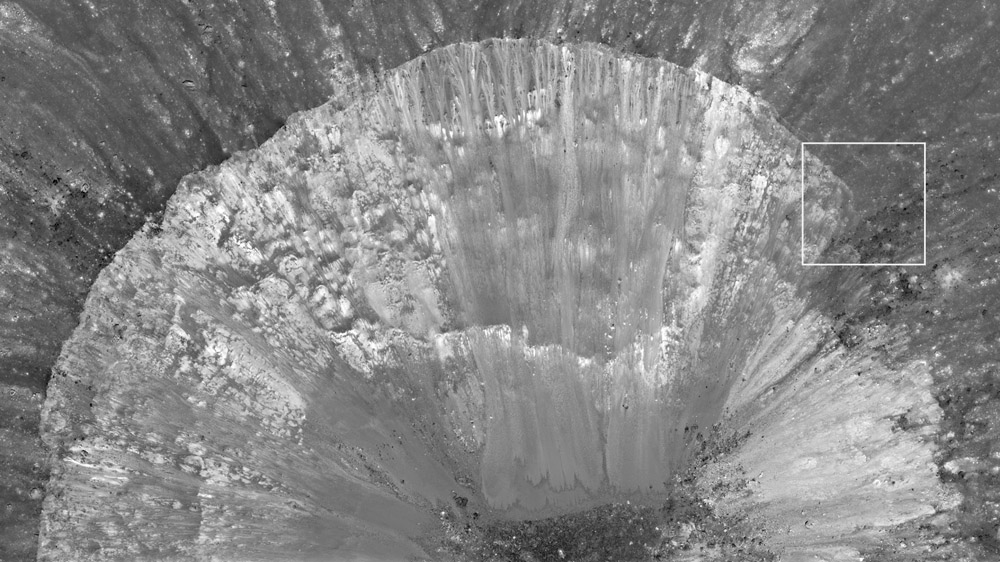October 9, 2011
Still Waiting
north to the left image from LRO Featured Images (NASA/GSFC/Arizona State University)
The 3 km wide Censorinus is a tiny bright beacon on the southeast shore of Mare Tanquillitatis. It is surprising that such a bright crater has such restricted rays. This Narrow Angle Camera image from the Lunar Reconnaissance Orbiter highlights the eastern half of the inner crater wall and the mostly sharp rim crest. The write-up by the LRO team points out that the rim is more poorly defined in the area of the white box than elsewhere, and speculates that variations in the strength of target rocks may account for it. That is probably so. Another characteristic of this area is that dark ejecta streamers - that are absolutely truncated on the north and northeast side of the rim (left) - flow both inside and outside the rim. Once this segment of the rim collapses these dark rocks will be truncated too. This shows - assuming the dark stuff was ejected all at the same time - that the rim of an impact crater does not collapse all in one glorious instant, but that at least some arcuate pieces collapse and tumble down to the floor later than most, or in this case not at all. We have seen that for complex craters too. Although the most important modification of the initial impact cavity occur quickly, some adjustments take place later.
Chuck Wood
Related Links
Rükl plate 47
COMMENTS?
Click on this icon File:PostIcon.jpg at the upper right to post a comment.




